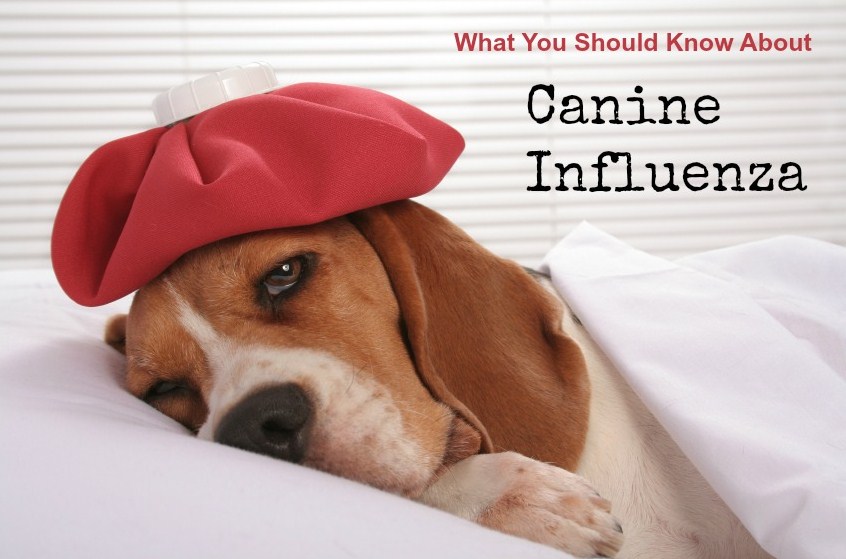Canine influenza is also called the dog flu disease. The disease is caused by an influenza virus. The causative agent of the disease is classified on the basis of amino acids compounds namely H3N8 and H3N2.Glycoproteins are the main causative agent of the disease. The virus affects other pet members as well as dogs. In highly populated pet areas, the spread of the disease is much higher than in an area inhabited by a low pet population. The origin of the disease dates back to Asia, although there are speculations that the disease was imported to other countries through the importation of dogs from Asia.
Transmission of canine influenza disease
The disease spread at a faster rate since it is an airborne disease. Canine influenza is transmitted through aerosolized secretion. The aerosol transmission greatly affects the respiratory system. Through coughing, barking and sneezing a dog can transmit the disease.
An outbreak of the disease is prevalent in areas where the infected and susceptible dogs are in close contact. Common areas of contact between dogs include dog shelters, kennel, grooming facilities and dog care facilities. Some dogs develop a milder complication of canine influenza and recover from the disease without chronic complications.
The canine influenza virus has a lifespan of 48 hours on any surface, 24 hours on clothing and 12 hours while on hands. From the day of exposure to the start of the clinical signs, the incubation period of the disease ranges from two to four days. During this time, there will be no physical signs and any form of illness.The infection of the disease affects all types of dog breeds. Small dog breeds, medium dog breeds, and large dog breeds have equal chances of being infected and transmitting the disease.
Pathology and clinical signs of canine influenza disease
Exposed dogs to the canine influenza virus will automatically get infected but 80{6be2db3b88870d4886eebf8b9afca4bb83e0a042bc3cf1b41260af04e7c2bfbe} of the infected dog develops critical signs. The infection and the replication of the disease are through cells and respiration trucks. The most affected areas are the nasal lining and the respiratory trucks. Clinical signs in dogs include rhinitis, bronchitis, among many other inflammatory responses. Coughing and nasal discharge are other clinical signs of the disease.
With the infection, there is a development of acute respiratory infections. The infected and affected dogs can develop either a soft, moist or a dry cough. Nasal discharge, fever, ocular discharge, lethargy, and anorexia are signs of the disease. Other dogs will develop pneumonia once infected. Other signs of the disease include bronchopneumonia, fibriniouspleutiris and hemorrhages in dog lungs, malise lips smacking and intense salivation

Diagnosis of canine influenza dog disease
The use of clinical signs will not diagnose canine influenza. It possesses a great problem to diagnose coughing, sneezing and nasal discharge even in human beings. Most veterinary officer’s bank on the use of antibodies against the canine influenza virus since the antibodies against the virus can be detected in the dog blood stream after 8 days from the clinical infections.
The use of the serological test is the best method to diagnose canine influenza. Both paired acute serum and convalescent serum samples will help in the detection of early infection in dogs. Serological testing is done for HN3N8 AND H3N2. During serological tests, nasal swabs will yield better results than nasopharyngeal test
The conduction of viral culture and PCR analysis will be of great help in the diagnosis of canine influenza.
Prevention and control of canine influenza
Prevention of the disease entails the use of disinfectants e.g. quaternary and ammonia compounds. The disinfection follows a certain type of protocol whereby the disinfectants are sprayed in moderation. The spread of the virus is through contact with clothes, and it lasts for a period of 24 hours
The wash of employee’s hands and clothes should be upon the arrival of the infected animal at the medical facility, before and after handling each pair of dog, during the cleaning of dog cages, before taking meals and when using washrooms.
While taking care of the infected animals, one should wear protective equipment like gloves and shoes. Make sure that there is no contact of the virus with your skin. Dog owners should scrutinize their dog and lock them from dog populated areas.
As a dog owner, you should vaccinate your dog against canine influenza. Currently, there are two forms of vaccines on board the H3N8 CIV vaccine and H3n2 canine influenza vaccine. The vaccines will reduce and control the spread of the canine influenza virus.
A point to note is that the vaccine may not be compatible to all dog breeds. Some dog breeds will be resistant to the vaccine while the vaccine will be integrated by other dog breeds with minimal complications
Some dog groups will benefit from canine influenza vaccines. These are dog types that are subjected to the kennel cough vaccine. As a dog owner, you should inspect your dog lifestyle and ascertain if your dog lifestyle will be compatible with the use of canine influenza vaccine. You can contact your veterinary officer for a given directive.
Canine influenza treatment
The treatment of the disease possesses a great challenge. Due to the difficulties in the diagnosis of the disease, treatment schedule may commence while the disease is in the final stages. The treatment of the diseases is highly supportive and it takes 2 to 3 weeks for full recovery after the infection. The presence of secondary infection, pregnancy, tracheal collapse among other complication, may develop the need for addition diagnostic care and treatment.
The use of antimicrobials for the treatment of secondary and suspected bacterial infections will be a good plan. Factors to consider before the using the mode of treatment includes the broad activity spectrum of the dog and Trans-tracheal aspirates.
The reduction of fever and inflammation will be through the use of non-steroidal anti-inflammatory medication. The use of fluids will help in correction of dehydration and will maintain hydration.
Contingency treatment plan entails the isolation of infected animals for a period of at least 21 days. Administering approved antiviral drugs for dog use will be a good contingency plan. Make sure the approved drugs are safe for dog use.

If a dog with respiratory signs is presented, staff members should inquire whether the dog has recently been boarded or adopted from a shelter, has recently participated in dog-related group activities, or has been exposed to other dogs known to have canine influenza or kennel cough.